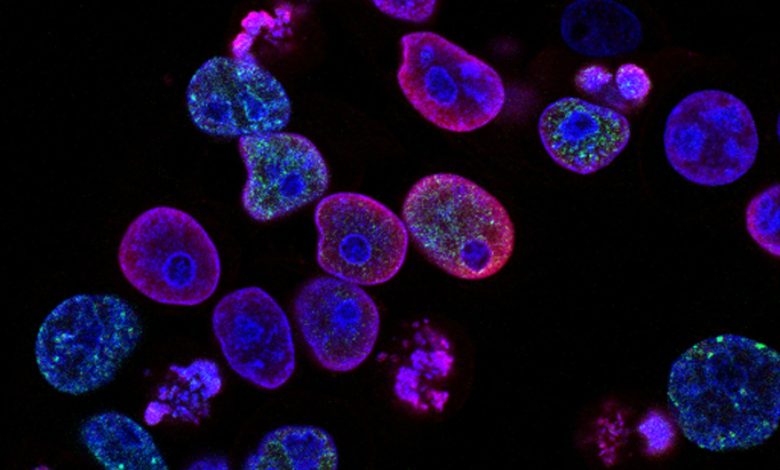Why legionella management is here to grow

Legionella bacteria are typically found naturally in freshwater environments, but can become a health concern when they grow and spread in human-made water systems. With this it has become a massive responsibility for landlords and building owners to take on the task of warding off the presence of this super dangerous bacteria. Easier said than done, it is now big business in commercial buildings to ensure there is no legionella.
What you need to know – an overview
Under certain circumstances Legionella bacteria can lead to serious illness and fatalities in humans. Since Legionella bacteria can exist in man-made water systems, it is imperative to ensure the water is stored, maintained and distributed at temperatures that do not encourage the growth and spread of the bacteria. There are three temperature ranges that have an influence on the growth and proliferation of Legionella bacteria.
Legionella – is it able to grow and become present in cold water?
Contrary to what some may believe, Legionella bacteria do not die off as water temperatures drop below 20 degrees Celsius. Instead, they become inactive and unlikely to cause harm. It’s also important to remember that they do not multiply while in this state. What does need to be known though is that if water at this temperature is released for use and it is warmed during that process, it may lead to some potential for Legionella bacteria to cause harm. A risk assessment is for sure encouraged to help confirm this.
Can you kill legionella? And if so, how?
Once hot water temperatures reach 50 degrees, the Legionella bacteria will begin to die off. The speed to which this will be able to happen and develop very much overall depends on how high the temperature goes, the hotter the temperature the more effective the kill rate. A two-hour period where the water is maintained at 50 degrees Celsius will get rid of 90% of the bacteria. If the temperature of the water is raised to 60 degrees Celsius, the same percentage of bacteria will die in just two minutes. Raise that temperature again to hit 70 degrees Celsius and all the Legionella bacteria present will die straightaway.
Typical sample area of legionella – spa pools
Spa-pool systems are a recognised source of diseases caused by infectious agents including the organism that causes legionnaires’ disease, primarily Legionella pneumpohila. There have been a number of outbreaks linked to spa pools in leisure centres, hotels, holiday homes, on cruise ships and on display. If you think of the number of people going in and out of one of these pools, there are no end ways in which germs will be able to circulate. This for sure makes such a pool rife with risk.
How do you prevent Legionella in a hot tub?
Cleaning and maintaining the hot tub regularly is the only way to ensure that bacteria do not concentrate in the water and the spray, he explains. As a result, the HPA has produced guidance on how to clean hot tubs and spa pools with chemicals which disinfect the water. Hot tubs should be cleaned and disinfected regularly to prevent the spread of infections. Easier said than done, it is so worth it to able to get rid of this bacteria. You may need to actually empty the tub in the first instance to begin the process of getting rid of the legionella bacteria.
Hot tubs or spa pools are popular in gyms, hotels and increasingly in people’s back gardens. Experts say they can be a health risk if they are not looked after. This is where half the issue lays and as touched on, they need to be properly maintained in order for them to be safe. The bubbling and frothing of the aerosols in a hot tub can then throw the bacteria into the air for several yards around the tub. So you don’t have to be sitting in the hot tub to inhale the bacteria.
This is why in a hotel, it is highly likely you will see members of staff walking around several times a day to check on the water temperature of a spa and swimming pool to see how it is running – and if correctly too.
Legionnaires’ disease
In general, cases of Legionnaires’ disease have been increasing in number over the past 30 years. In the last 10 years, HPA figures show that cases have averaged 350 each year. There is no knowing how many of these are due to hot tubs, because of the difficulty of finding the exact source of an outbreak. Around half of cases are linked to overseas travel.
It is not just from this though. When it comes down to it, there are some other potential problems with hot tubs if not maintained. Having the correct maintenance in place is key. This is to making sure your hot tub is safe and that you won’t succumb to the disease. The amount of skin that is shed in hot tubs can lead to cases of Pseudomonal infection and some people have also had boils appear on their bodies. In short there are no direct levels of chemicals that will be able to ever rid this risk factor from a spa pool to the people that may site in a hot tub. Overall this is a massive health precaution to consider.
Private owners
For private owners they should make sure they use the appropriate chemicals to clean tubs and disinfect the water too. This is key and should be something of a massive responsibility on their part.
Overall
Overall, where there is water on a mass scale and in a commercial site, legionella management will be needed. This is a fact and off of the back of this, there will be key steps that need to be taken in an effort for enhanced safety too. From the chemicals used, the cleaning undertaken, inspections carried out to the other wider processes, there are for sure some very key steps that need to be taken so this disease can’t and won’t spread. It is very much a checklist process and certain points are vital.





